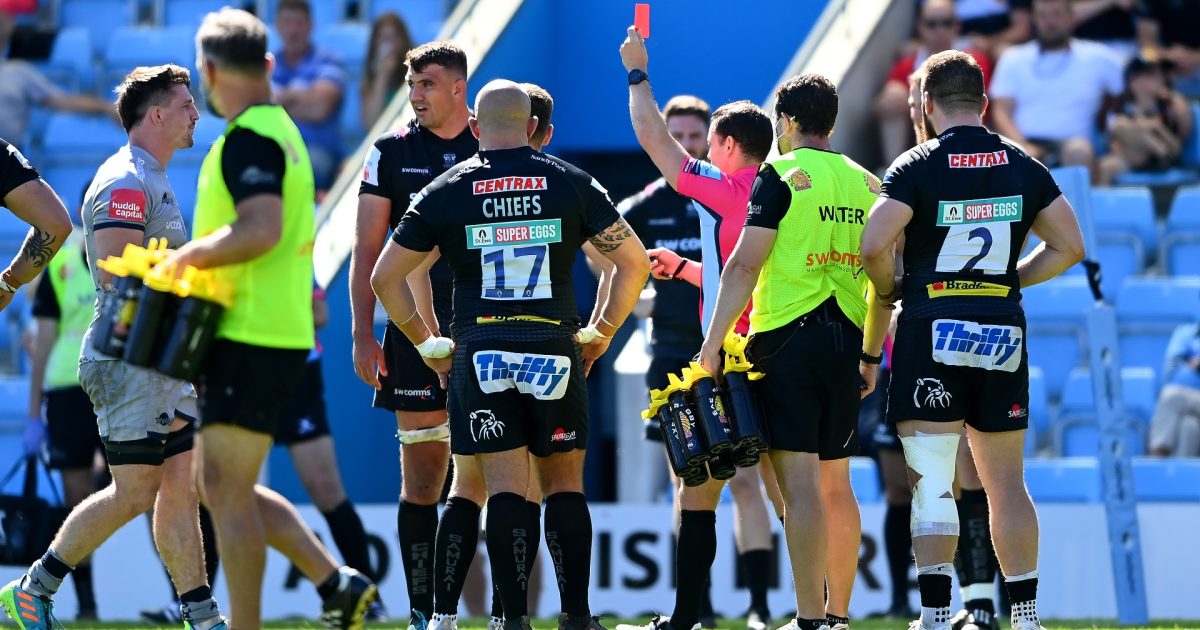The 'fine line' Baxter wants tackled in 20-minute red card debate

Exeter boss Rob Baxter believes there is some value in investigating the feasibility of 20-minute red cards. World Rugby is considering extending a law trial currently operating in the southern hemisphere’s Super Rugby tournament to other competitions, allowing them to gather more data on its impact in matches.
The rule allows for a sent-off player to be tactically replaced by a substitute after 20 minutes, therefore preventing early dismissals from ruining games. It follows an increase in red cards as World Rugby looks to stamp out dangerous play, particularly high tackles involving contact with the head.
“Anyone who watches rugby knows there is a definite distinction between a straight red that is a proper, always has been, always will be, red card, and some of the ones that are kind of borderline,” said Baxter, the long-time Exeter coach. “How you distinguish between the two is the challenge, isn’t it?
“None of us would want to see a horrific piece of foul play and then a player comes on after 20 minutes, would we? At the same time, we all understand the ones where even 20 minutes can feel like a harsh one. It is worth some value in investigating, but the challenge is the distinction between what it gets awarded for.”
Yellow cards see players sent from the field for a ten-minute spell while there have been calls for potentially an orange card to be introduced as a way of tackling the grey area between yellows and marginal reds.
Baxter added: “It’s a difficult one. Are we saying a red card should become 20 minutes, or should we just be saying that more things are yellow cards? A red card has to have a higher distinction to be a red card. Do you need another (colour) card, or do we just need real clarity over what is deemed red-card level?
“Probably the people talking about having orange cards or having 20-minute red cards, whatever, those are for decisions where there is a very fine line between the yellow and the red. Perhaps what we need to talk about is there shouldn’t be a fine line between yellow and red.
“A red should be an absolute, clear-cut ‘that was a red card’. Other things, then, can become yellows or penalties. What we are trying to do is trying to fill the gap, aren’t we? So you either fill the gap or put a better distinction so the gap is wider.”




























